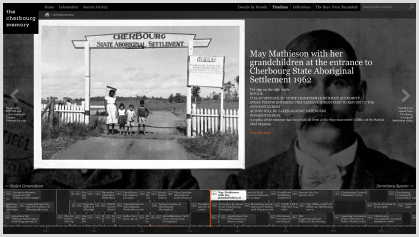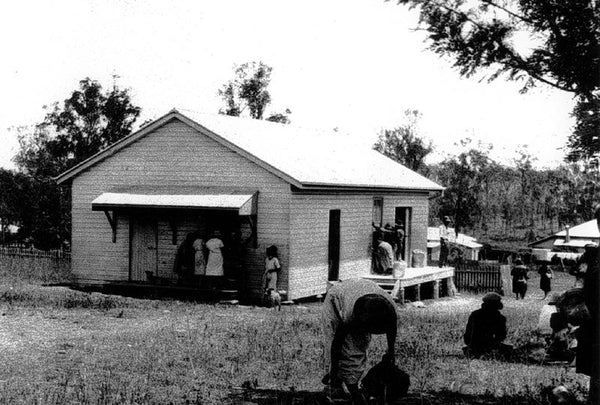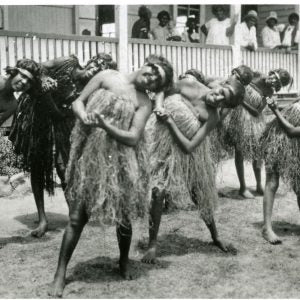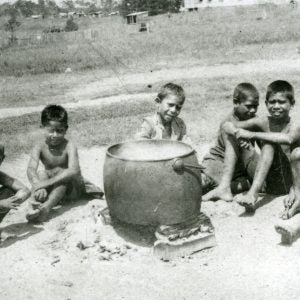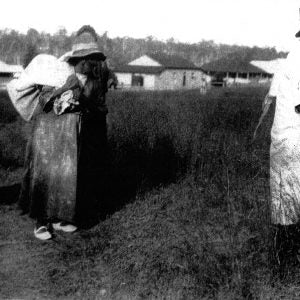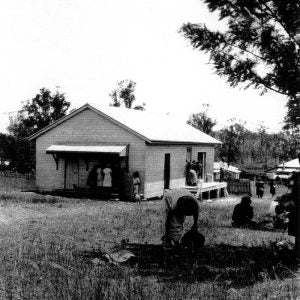Beginnings
Cherbourg is an Aboriginal community in South East Queensland. It was established by Salvation Army member William Thompson in 1899. Barambah/Cherbourg was taken over as a Government Settlement in 1904. Under the “Aboriginal Protection Act” people from numerous clans and tribes in all parts of Queensland and northern New South Wales were moved here.
Settlement
On the settlement, the government administration controlled almost every aspect of our peoples’ lives – the language they spoke, what they ate, what they wore, where they went, for whom they worked and, even who they would marry.
Aboriginal people, removed to Cherbourg were either placed in dormitories or lived in camps.
Large numbers of boys and girls, men and women were brought up away from families in the dormitories. Anyone breaking the strict laws were severely punished – locked up in jail or sent away to other reserves up north, like Palm Island and Woorabinda.
Traditionally, our people ate food they hunted and gathered from the land. They ate food like kangaroo, wallaby, porci (echidna) goanna, snake and fish as well as fruits from native trees, plant roots, seeds, berries and leaves.
Being forced to live in the close confines of the Barambah settlement, hunting and gathering were no longer possible.
Rations
The government provided weekly rations - Tea, sugar, rice, salt, sago, tapioca, split peas, porridge, flour and meat. These were handed out from a Ration Shed. Today that same shed has been restored and is called the Ration Shed Museum and is a standing memorial to those days.
After the 1967 National Referendum our people started to gain more freedom and the power to run their own affairs. In 1988 Cherbourg became a Deed of Grant in Trust Community (DOGIT) and in 1991 the first independent Cherbourg Council was elected. Today Cherbourg is a vibrant community with its our own culture and identity. There are approximately 2000 Aboriginal people living there.
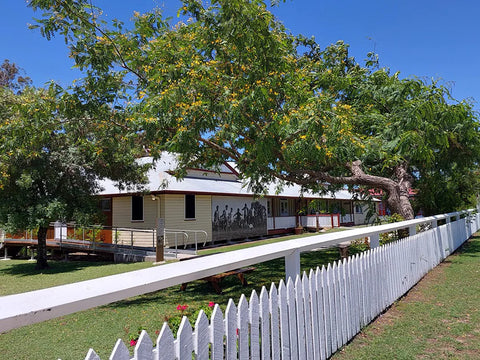
cherbourg historical precinct
The idea for establishing a historical precinct grew out of the celebration of Cherbourg’s centenary in 2004. Sandra Morgan and her sister Lesley Williams were collecting items for an historic display when they discovered that the old Ration Shed (constructed 1927) at the bottom of the footy oval – still intact.
It was from the Ration Shed that those on the Settlement received rations, primarily flour, sugar and meat and at times rice, oatmeal and sago, in exchange for work undertaken within the Settlement. They decided that the building should be preserved and relocated back to the centre of the settlement and adapted as a museum.
The success of the project prompted several members of the community to consider the conservation of other historic buildings, specifically the Superintendent’s Office, Boys Dormitory and Domestic Science building. The group wanted to create a space where they could tell their stories, share their painful past and celebrate their survival.
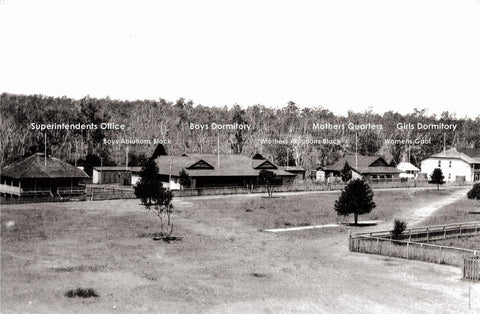
The dormitory system was an integral part of Cherbourg soon after it was established in 1901. The Barambah/Cherbourg reserve was regarded as more than just a dumping ground for displaced Aboriginal people but as a place for caring and ‘reforming’ Aboriginal children. Under the Reformatory Schools Act, ‘any child born of an Aboriginal or half caste mother’ was deemed to be a ‘neglected child’ and as such was liable to be sent to a reformatory or industrial school. As in many parts of Australia, boys and girls in Cherbourg were housed in dormitories, cruelly separated from family and community. This had a major impact on our people, something we still feel today. Today there are a few remaining Elders in Cherbourg who survived those times and have stories to tell of those painful times.
Indigenous women were trained in domestic skills such as cooking and sewing. Young women were used as a source of domestic labour in the outside community. Men and boys were contracted out for work on farms and stations. In this regard, the Settlement served as a de facto labour depot.
Visit the Cherbourg Memory Project
Our Cherbourg Memory web app allows you to browse our archive of photos and videos as well as discovering aboriginal history in South East Qld with our Decade by Decade and Theme timeline apps.
